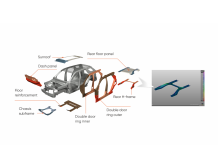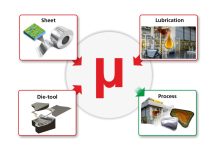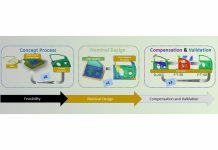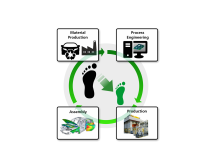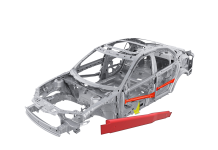In this blog post, Dr. Alper Güner provides all FormingWorld.com fans with an overview of the new fundamental material training for hot stamping process engineers. The course is NOT an AutoForm-software training, involves no prerequisites and is available to the entire community.
There is a unique feature in the hot stamping process of manganese boron steels. Hot stampers do not only deliver the form of the product; in addition, they deliver final product properties, including hard and soft zones, defined hardness, and defined rest ductility. Hence, process engineers in the field of hot stamping are not only concerned with the desired geometrical form in given tolerances (thinning, wrinkling, etc.). They also need to consider the final product’s properties. For this reason, process engineers would benefit from fundamental knowledge training to enhance their understanding of phase transformation in manganese-boron steels (for instance, 22MnB5).
Challenges in understanding phase transformation for process engineers
As sheet metal formers dealing with metallurgical issues, we encounter three main challenges:
- Firstly, we usually end up with complicated diagrams that are not easy to understand. We have seen many similar diagrams before, but it’s difficult to extrapolate the key information that we require.
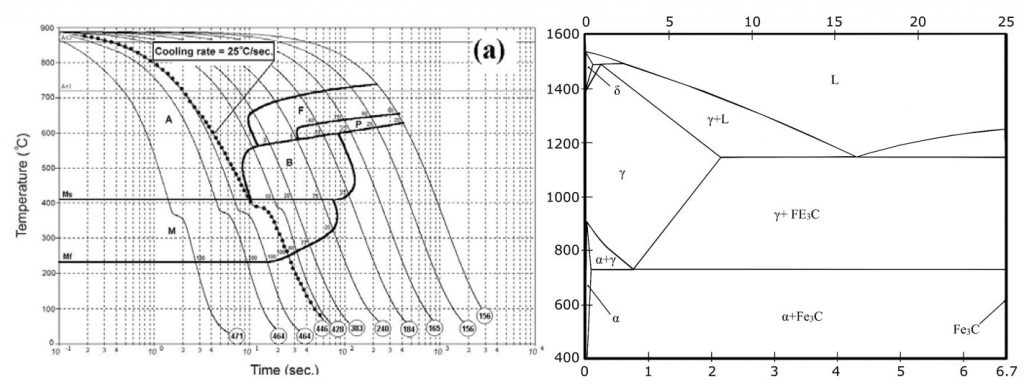
- Secondly, when we research using books or websites, we see terms like α-steel, γ-steel, Ac3 temperature, TTT and CCT diagrams, dilatation, and critical cooling rates. We have to remember that material science is a completely different field than metal forming and each field of study has its own unique language (which we may not understand directly).
- Thirdly, material specialists and textbooks have a totally different focus. We can almost say that they do not care about hot stamping of MnB-Steels. They do try to understand and formulate phase transformation mechanisms but they generally disregard hot stamping of MnB-Steels.
As a result, it is difficult to get the essential metallurgical information needed specifically for hot stamping. We encounter this problem frequently in our support calls and project meetings, receiving similar questions from process engineers all over the world.
FAQ of hot stamping process engineers about metallurgical issues
- What are the main material parameters used to model hot stamping?
- How does phase transformation work?
- What are α and γ steels?
- I heard that pearlite is not a real phase. Why?
- Our laboratory cannot always detect bainite. Why is it very hard to detect bainite on specimens taken from parts? And what is bainite, by the way?
- I’m familiar with the iron-carbon phase diagrams from past training, but there is no martensite or bainite in those diagrams. Why is that?
- What do the terms A1, A2, A3 or Ac3 represent? Is A3 temperature the same as Ac3 temperature?
- Are TTT diagrams and CCT diagrams the same? How do I read a CCT diagram?
- How do tailored tempering methods work? How do we generate soft zones?
- How much should we scale the tools? How does part volume change during and after quenching? Can we simulate that?
The solution:
New fundamental training: “Material behavior in hot stamping of manganese-boron steels”
We recognized the same demand throughout the hot stamping community, so we developed a completely new fundamental training. Our aim is to summarize all essential metallurgical aspects in a one-day compact training, specially designed for hot stamping process engineers.
As with all of our fundamental trainings, this course is open to the entire community. It does not matter if you are using AutoForm, PamStamp or Ls-Dyna. It does not matter if you are simulating or not. This training covers the following topics:
- Introduction to hot stamping technology and modelling of hot stamping
- Elastic properties
- Phases of steel and phase diagrams
- Phase dependent flow curves
- Phase transformation, CCT and TTT diagrams
- Temperature dependent r-values and FLCs
- Material grades in hot stamping
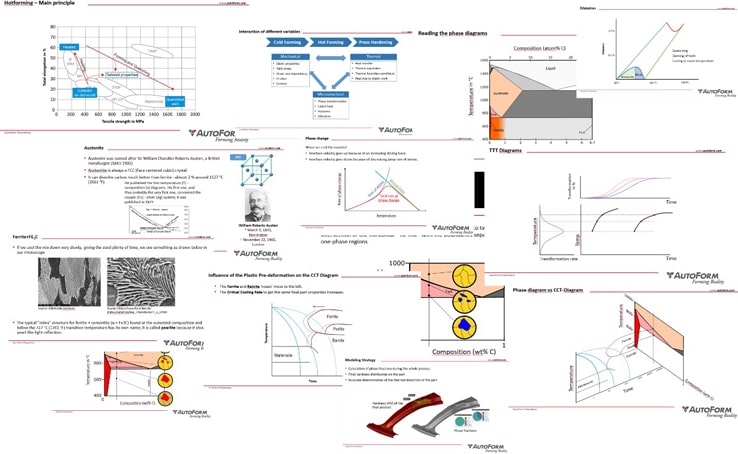
We hope to meet you at one of our fundamental training events to share our collective knowledge. Contact your local AutoForm office for more information and to enroll.



